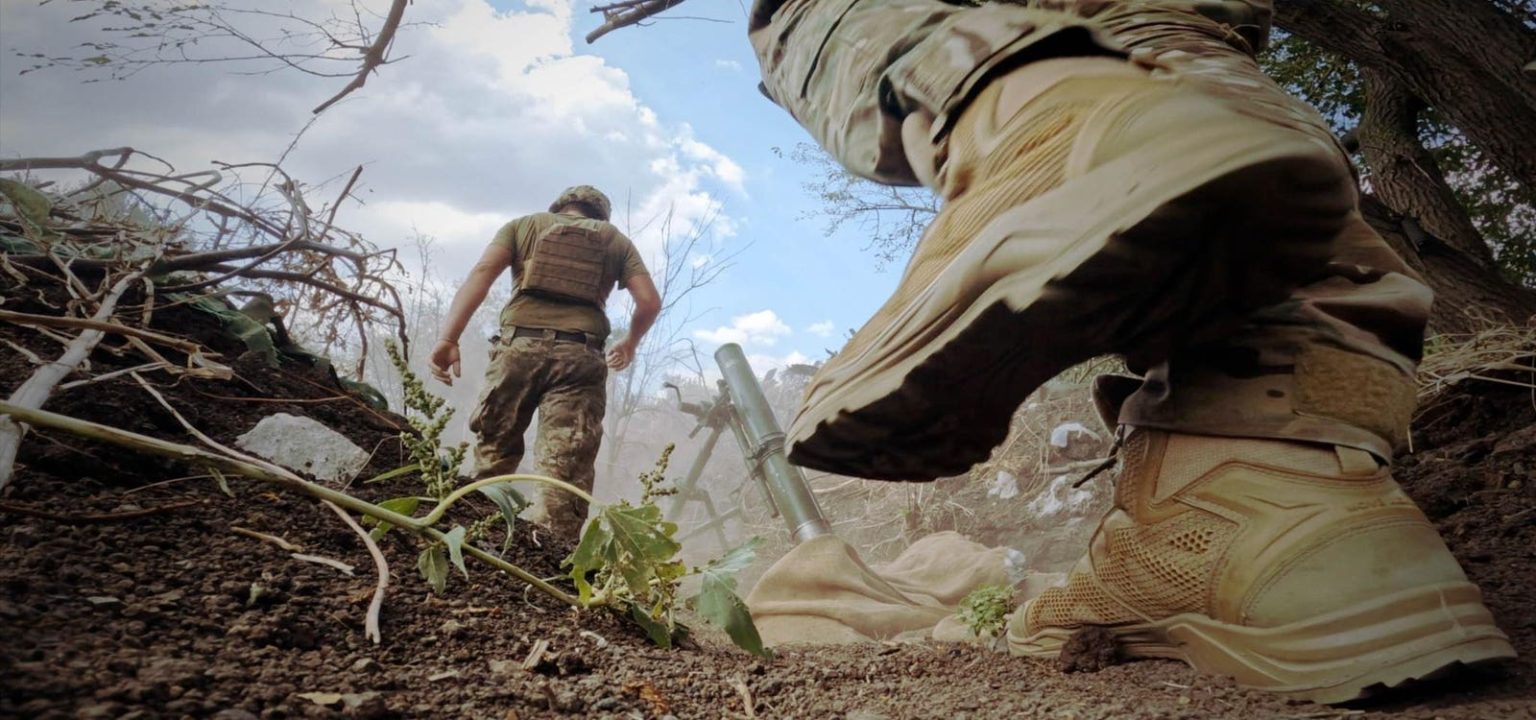Ukrainian troops abandoned an American-made Humvee jeep in southern Ukraine’s Kherson Oblast in recent days, and Russian troops struck the mired vehicle—setting it on fire.
Believe it or not, the loss of that Humvee is good news for advocates of a free Ukraine. Because of where the Humvee was when its occupants bailed out: the left bank of the Dnipro River.
That there was a Ukrainian Humvee on the mostly Russian-held side of the Dnipro means the Ukrainians have succeeded in shuttling vehicles across the wide river into a shallow bridgehead that Kyiv’s forces established in a series of daring raids starting late last month.
One burning Humvee isn’t the only evidence of heavier Ukrainian equipment crossing the Dnipro. On Tuesday, an apparent Russian paratrooper writing for a popular Telegram channel complained that the Ukrainians “not only managed to move to the left bank, but also took up positions along the bank and occupied part of the villages!”
The Ukrainian military “holds positions and also transports armored vehicles across the Dnipro,” the apparent paratrooper added. Every vehicle that makes it across the river improves the Ukrainians’ chance of holding and expanding their bridgehead.
It might be premature to declare that Ukraine has opened a new front in its five-month-old counteroffensive. But not by much.
Ukrainian forces have launched a lot of small raids across the Dnipro since liberating northern Kherson Oblast on the river’s right bank in late 2022. Typically, the Ukrainians kill or capture a few Russians, inflict some damage then flee as Russian artillery and drones dial in.
But the cross-river operation beginning on Oct. 19 has been different. This time, the Ukrainians—reportedly from the 38th Marine Brigade—stayed. Ten days into the op, the marines not only still were on the Dnipro’s left bank, they’d extended their control across Krynky, a three-mile-wide settlement that quickly became the locus of Ukraine’s attacks in southern Kherson Oblast.
One Russian marine from the 810th Guards Naval Infantry Brigade described his brigade’s situation as “very difficult.”
The Ukrainians “are constantly firing at us with artillery, using cluster munitions and, most importantly, they are using a whole horde of [first-person-view] drones and UAVs with [grenades] that work around the clock.”
How the Ukrainians have sustained and expanded their Dnipro bridgehead is evident in photos, videos and social-media posts from the front line. We can see small boats and amphibious landing vehicles; the Ukrainians presumably also have deployed pontoon bridges.
Both Ukrainian and Russian sources have discussed Ukraine’s advantage in aerial drones over this particular sector. First, Ukrainian forces jammed Russian drones. Then they deployed drones of their own—for reconnaissance, artillery-spotting, bombing and resupply.
The supply drones are a rarely-seen capability. “The guys have gone very deep to the left bank of Kherson and it is difficult to deliver gasoline to them by water and land—it is risky for life!” one Ukrainian drone-operator wrote. “The bombardier drone we bought can lift 15 kilograms on board and carry batteries for radios, power banks, food [and] water to the guys.”
While some drones deliver vital supplies the Ukrainian garrison, others drop grenades on Russian vehicles counterattacking the Krynky bridgehead—most recently, a T-72 tank. The Russians largely have been powerless to stop Ukrainian drone flights, suppress Ukrainian artillery or out-plan Ukrainian commanders.
“Multiple Russian sources, including a Wagner Group-affiliated channel, complained about Russian forces’ lack of counterbattery, electronic warfare and command-and-control capabilities in the Kherson direction, particularly near Krynky,” the Institute for the Study of War in Washington, D.C. noted.
There was a time, shortly after the Ukrainian marines landed in Krynky, when the Russian marines on the Dnipro’s left bank might’ve counterattacked and pushed the Ukrainians back into the water.
They didn’t—or simply tried and failed. And now Ukraine has a lodgement in southern Kherson. One from which it could launch attacks deeper into Russian-held territory.
Read the full article here





